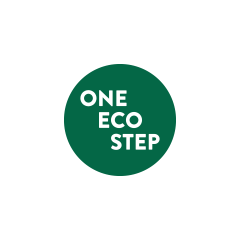Step-by-step guide to travelling overseas with a baby

When my first was 4 months old, we travelled to Asia for 2 months. On my leg home, I travelled alone with my 6 month old back to Melbourne. Before jetting off, I googled almost every site on how to travel with a baby and what exactly to pack in our carry-on. The sites were helpful, but I was a first-time mum and I needed a step-by-step guide. Because mentally I was rehearsing how to fold up the pram and hold the baby when going through airport security. And I'm a bit anxious about it.
If you are travelling overseas with a baby from Australia, this will be the perfect step-by-step guide for you.
1. Before you fly
Feeding - If you are nursing, one good thing is that you can travel lighter and there is no need to bring bottles.
For pumping mamas, bring your portable pump, nursing cover along with pump parts, bottles and spare breastmilk storage bags. If you have to pump more than once on the flight, bring a small container (max 100ml) of bottle cleanser to wash the pump parts and ask for hot water to rinse and 'sterilise'.
For formula feeding, bring enough pre-sterilised bottles, pre-packaged formula powder, hot water in a thermos flask and cool boiled water. You can bring as much water as you need to prepare the feeds. We travelled for 15 hours on our first leg and brought 2.5 litres of water on the plane. It was more than enough, but better to be prepared than sorry.
For babies who have started on solids, you can call the airline before flying to request for baby food. We were usually offered Heinz baby food in jars. If you prefer, you can also prepare your baby food and bring them on board.
Diapers - We brought only a pack of diapers and bought the rest in the destination country to save on luggage space.
Formula - We estimated how many cans of formula we needed and brought them with us. You can choose to get formula in the destination country, but it's better to bring your baby's preferred brand in case baby is fussy about it.
Clothes - Pack extra set of clothes in the diaper bag for baby, yourself and your travelling partner in case of vomit or messy accidents.
Stroller/Carrier - Decide if you want to bring your stroller into the boarding gate or if you rather check-in your stroller at the check-in counter and use your carrier instead. I used my stroller until the boarding gate and also brought my carrier with me.
Bassinet - Call up your airline prior to flying to book the bassinet in advance. It is provided on first come first served basis. Bassinets are provided for infants under the age of 2.
Day/Night flight - Decide if you want to fly day or night flights. We have done both and I will only do night flights for long-haul. Our babies get tired from the day and once on board, they will sleep. But in the day, they get stimulated and active and the entire flight was spent trying to entertain them.
2. Check in counter
Try to arrive in the airport 2.5 to 3 hours prior to flight time to allow for extra time when travelling with babies. When you are at the check-in counter, inform the airline staff that you have a stroller and if you intend to check it in now or at the boarding gate. Either way, they will provide you with a luggage tag for the stroller.
3. Security screening
We are based in Melbourne, and usually we wheel the stroller through the security screening without having to take baby out. But this may differ from airport to airport. Also, it's pretty obvious that we're travelling with a baby so the officers didn't question us on the liquid that we had in the bag.
4. Immigration
Head to the immigration officer to get your documents checked. Travelling with a baby means that we aren't able to go through the automatic immigration machine.
5. Boarding gate
Once you have reached the gate, take a seat and wait until it is almost boarding time. Some time before boarding, there should be staff approaching families to collect the strollers. Alternatively, you can always let staff know that you have a stroller and hand them over either at the staff desk or in the jet bridge before entering the plane.
Also, take this time to change baby's diaper.
6. Take off
At take-off, nurse your baby if you're breastfeeding to reduce the discomfort baby may feel from the change in cabin pressure. Otherwise, you can bottle-feed, give pacifier or use pressure-reducing baby earmuffs on them (see below). I bought these earmuffs for $39.99 and it worked well on take-off and landing.

7. Change table in toilets
On the plane, ask the flight attendant which lavatory has the change table installed. The fold-down change table is usually installed above the toilet seat.

8. Landing
Same as take-off, do the same thing during landing to reduce the discomfort in baby's ears.
9. Pick up your stroller
Right after you have alighted from the plane, pick up your stroller at the jet bridge. Usually, the pick up place shouldn't be too far from the plane door. If you're unsure, just ask the staff where to pick-up. Because they have to collect the strollers from the storage, you might have to wait for a bit.
Once you've cleared through customs, collect your baggage and make your way to your accommodation. Make sure you check destination country's rules about car seat requirements if you're renting a car. Happy holidays and safe travels!
